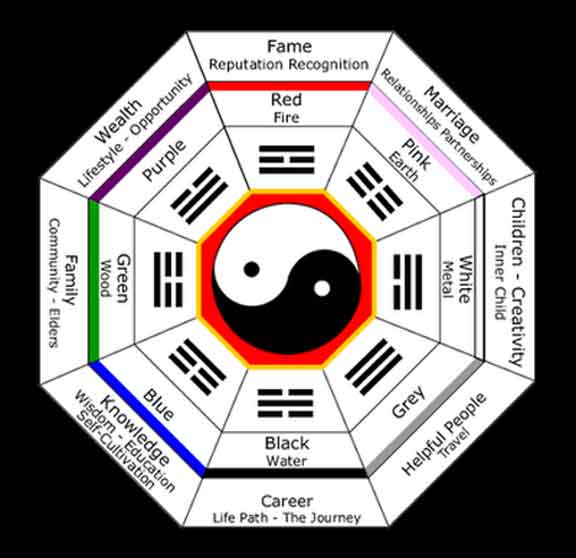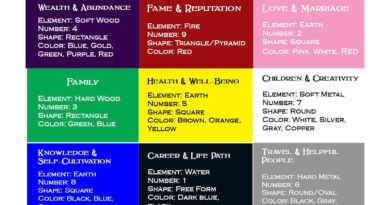FENG SHUI PRINCIPLES | An Architect Explains
Feng Shui literally means ‘wind and water’. Feng means the wind that carries the Chi, the invisible energy, the all-pervading life force that surrounds us. Shui is the water that meanders underneath the earth transporting Chi. Chi should flow effortlessly around physical structures to bring balance and harmony. Feng Shui is the art of placing buildings and objects so that the Chi is accentuated by the precise positioning of your house, furniture, decorations and other objects which then will bring positive vibrations and not negative ones that create discord and chaos. Feng Shui is also based on the interaction of Yin and Yang, the female and male forces along with Chinese astrology and the five elements, their colours and shapes.

Many Eastern cultures have for centuries used the art and science of Feng Shui in the planning of houses. Feng Shui has now become popular all over the world, because it offers simple remedies to correct the flaws in existing buildings and spaces. Anyone who learns the basic principles of Feng Shui can apply it to their spaces and surroundings to create positive and harmonious vibrations which then enhances their well-being and improves their lives.
The fundamental principles of Feng Shui have been dealt with, under the following headings in a simple and easy-to-understand way. Like it’s Indian counterpart, Vaastu Shastra, Feng Shui also has a thread of common sense running through it and this has been explained in each of these posts.
- Introduction To Feng Shui
- Feng Shui Energy (Chi)
- Feng Shui Yin And Yang Theory
- Feng Shui Eight Yin-Yang Energies
- Feng Shui Bagua Map
- Feng Shui Five Elements
- Feng Shui Using The Elements
- Feng Shui Element Colours And Shapes
- Feng Shui Bagua Sectors
- Feng Shui Best Personal Directions
- Feng Shui For Staircases
Once you have understood the basic principles of Feng Shui, you can either apply them to an existing building/property or to a proposed building.The steps to be followed have been explained systematically and in detail under the following chapters:
To use Feng Shui in an existing building or property, go to:
To use the Feng Shui principles in a proposed building, go to:
VASTU SHASTRA AND FENG SHUI SIMILARITY
Feng Shui is conceptually similar to its Indian counterpart “Vastu Shastra“ in that, they both try to harmonize the flow of life-energy (“Chi” in Feng Shui or “Prana” in Vastu) through the house. You can read more about Vastu Shastra Principles here:
If you found this post useful, I would really love it if you pin it or share it. All it takes is a simple click on the “pin it” “like,” “share,” “tweet,” or Google+ buttons below the post.
Also, unlike many other sites, I do not insist that your ad blocker be turned off to allow you into my site. This is because I know that my content will be useful to you. But putting up posts regularly takes up time and hard work and I am able to run this site only because of the ads. So I will be much obliged, if you would turn off your ad blocker. Thank you!





Sir,
i am regular reader of your articles. thanks for such a great knowledge. I want to ask…that if should we first find the negative energies, nulify it and then go to increase the positive vibes?
Hi Arun,
Thank you for the appreciation. In my opinion, if you feel negative energy around you, first do things to nullify it and then try to increase the positive energy.
Admin
Sir,
i am regular reader of your articles. thanks for such a great knowledge. I want to ask…that if i dont hv a great knowledge as an expert .i apply any tips of feng shui or vastu. if i do a mistake then is it cause of any problem or disaster…..
Hi Shalini,
Understand the essence of Vastu Shastra or Feng shui and then follow their guidelines sensibly. There is no need to follow everything exactly. Nothing untoward will happen. In both these, the focus is about allowing the “prana” or ‘energy’ (read as sunlight and fresh air) to flow smoothly through all the rooms without getting blocked or without rushing out to the outside.
Admin